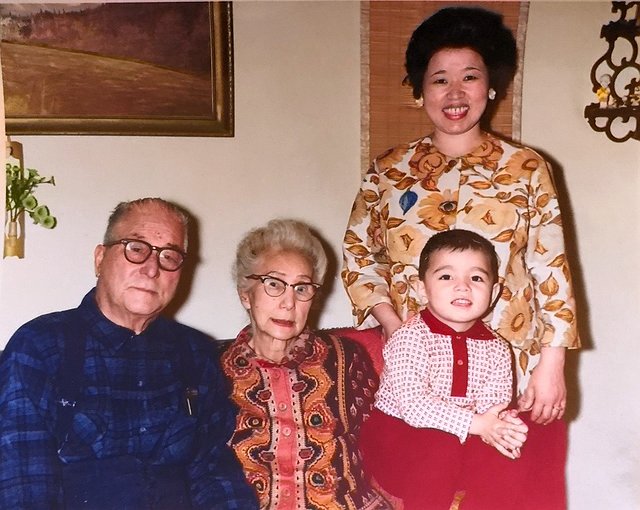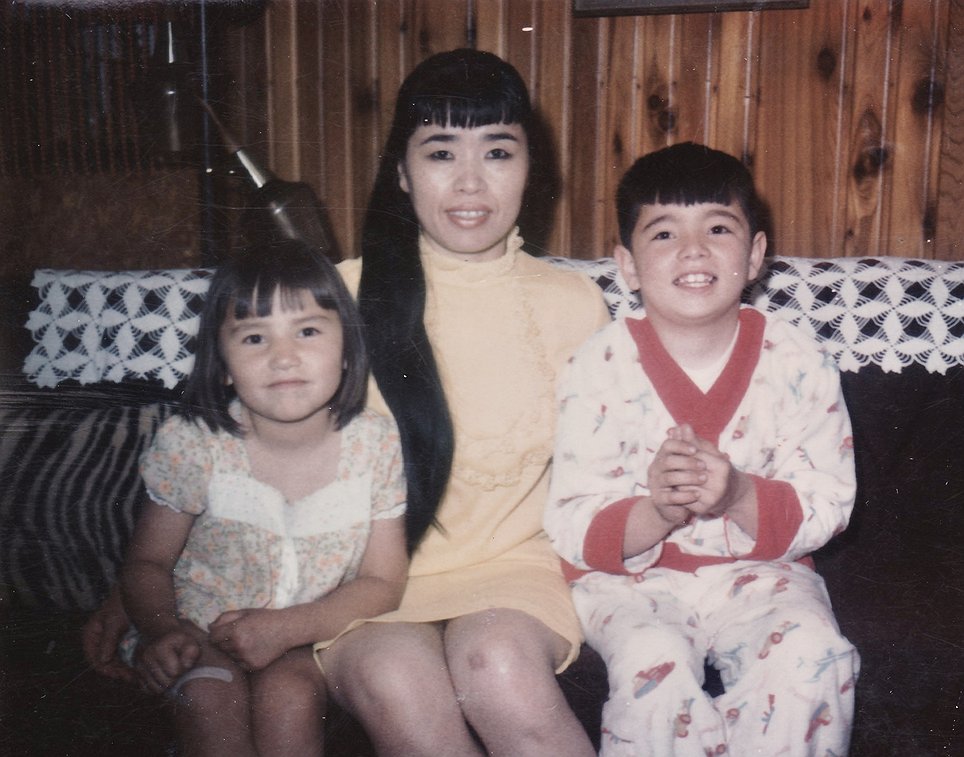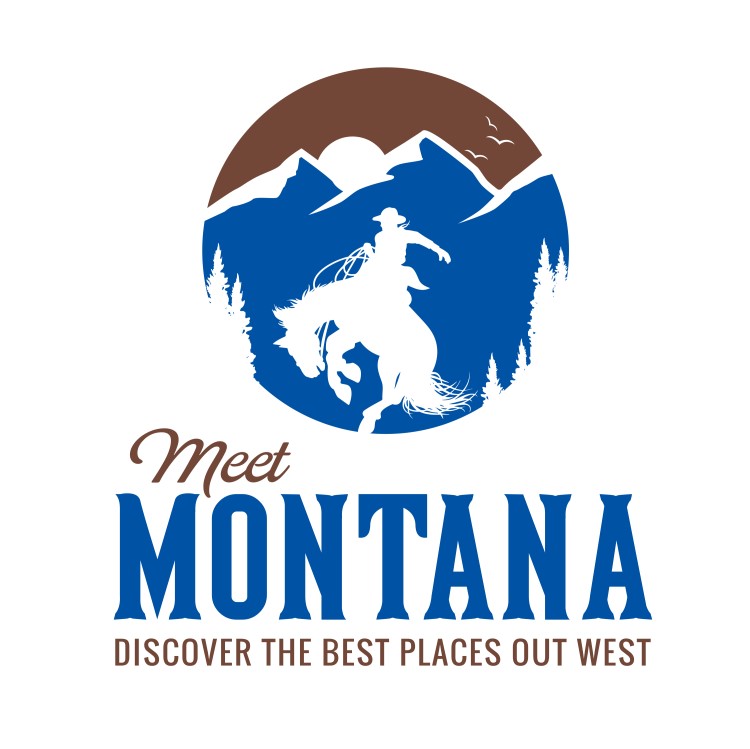Description
Nearly 45,000 Japanese women immigrated to America as wives of U.S. military service members following World War II.
Japanese war brides who made their lives in Kalispell are among the many women featured in a new Smithsonian traveling exhibition that will show at museums across the United States through mid-2028.
My mother, Wakako “Katie” Burk Dupuy, is one of them. The story of how she ended up in a Smithsonian exhibition goes back to the fall of 2016, when journalist Kathryn Tolbert wrote an article for The Washington Post about the Japanese women who had married American servicemen stationed in Japan in the 1950s.
They brought their brides back to America, usually to the hometown of the soldier, and often to rural counties and small towns throughout America. So, there they were, in a new country, raising their mixed-race children, and often the only ethnic minority. With and without their husbands, in the case of divorce, these women were making their way, amidst deep racism and in unfamiliar territory.
That article captured the life of my mom, who came to the Flathead Valley in 1959, when the population of Kalispell was less than 10,000 people. My comment on that Washington Post article, telling her about my mom in Montana, piqued Kathryn’s interest enough for her to contact me since she was interviewing families for an oral history archive, and we ended up in Kalispell in 2017.
In our initial interview, I told her that I couldn’t tell my mom’s story without including the other Japanese women in Kalispell. They had all settled in Kalispell, each with their own story. They found each other, and together, they raised their half-Japanese children and created their own little community.
Kathryn’s and my trip to Kalispell was quickly filled with interviews and research and connecting with families and friends of the Japanese war brides. The Daily Inter Lake wrote an article about us, which mentioned the dream of a future exhibit with the Smithsonian Institute.
Growing up, I watched these Japanese women in Kalispell, raising their families, working as employees, owning businesses, being out in the community, creating cultural events and celebrations, and supporting other minorities arriving in the Flathead Valley. They helped expand the demographic landscape and weave the diversity Kalispell now enjoys.
Kazuko “Kay” Aho, Haruko “Rocco” Frith and my mom, Wakako “Katie” Burk, three Japanese war brides, daughters of Japan, immigrants to America, and now ambassadors of Montana, have taken their place with the Smithsonian. All three have died but will remain in the hearts of those whose lives they touched in Kalispell.
The arrival of the Japanese war brides marked the largest women-only immigration event in U.S. history and by 1960 increased the population of Asian Americans in the U.S. by 10%, according to the Smithsonian.
The exhibit takes the visitor on a journey of historical reference, and the cultural tones of that era are felt in the background throughout. Each panel walks along the path of these women throughout the United States.
The cultural divide is palpable, and language barriers were an issue as many of these women barely spoke English and often retained a thick accent. Their diet of rice, fish and tea was replaced with meat, potatoes and coffee. Their new in-laws and new communities were not always welcoming, and their husbands were not always there. Some were divorced and couldn’t go back to Japan as they had been disowned when they married “the enemy” or couldn’t take their “mixed” children. That racial animosity, even xenophobia, was consistent in those early years.
However, these women were extraordinarily resilient and over time, learned English, embraced American customs, and became integral parts of their communities. They worked in local businesses, opened their own businesses, raised their families and slowly began to change the perceptions of their communities. While their experiences were often thick with challenge, their presence, consistent and true, was a force that changed the reception and acceptance of Asian culture for future generations of immigrants.
AN AMERICAN solider stationed in Tokyo Jim Aho married Kazuko “Kay” Tashiro in 1952. Kazuko survived the bombings of Nagasaki during the war. After being stationed in Japan, and then Germany, they raised five children, Shirley “Kyoko,” George, Emy, Johnny, and Anna in Kalispell.
Jim and the children were interviewed by Kathryn Tolbert for the project. Jim shared stories of initial racism and prejudice being a mixed-race couple, but they never wavered, and their long marriage was a testament. Jim and Kay ran the “Hiway Hostess” restaurant in Kalispell; her newspaper advertisement is on an exhibit panel. Kay’s dynamic personality and several business endeavors won the day and the people of Kalispell recognized her efforts with an informal “celebrity” status in the community. Her son, Johnny, shares this in his interactive recording at the exhibit called “Acceptance.” Emy and Shirley “Kyoko” are also featured in a recording called “The Only Brown Family,” regarding their childhood in Kalispell.
My dad, third generation Montanan Dale Burk, married my mom, Wakako “Katie” Kondou in 1957 in Yokosuka, Japan, and brought her home to Trego. After their divorce, she raised my brother, Bruce, and me in Kalispell.
Her mentor when she first arrived in the Flathead was a first generation Japanese American, Aya Hori Masuoka. My mom worked at the Elks Lodge for 35 years and her proudest moment was the day she became a naturalized U.S. citizen. When personalized license plates were available, Bruce suggested she put her Japanese name “Wakako” on her Montana license plate. That Montana plate, along with her picture is being showcased in the exhibit section “Choosing An Identity.”
My mom is also shown in a photograph doing the Japanese tea ceremony at an event in Fortine, taken by my German grandmother, Louise Burk. She was one of the lucky war brides who was sent from Japan by a loving and supportive Japanese family and received in America by a loving American family. In an interactive recording at the exhibit called “Cutting A Path In Montana,” I tearfully tell the story of how my mom and her friends pushed through those initial times of hardship and created an enduring presence in the community of Kalispell.
With roots to Lakeside, Steve Frith, married Haruko “Rocco” Gibo, of Okinawa. Although they divorced, Haruko stayed in Kalispell and raised her children, Sheila and Chris. She worked at The Outlaw Inn and was recognized as a valued employee many times over.
The friendships these women had with each other were uplifting and supportive and even necessary to build their lives in Northwest Montana. Haruko’s photo is in the interactive recording called “Cutting a Path in Montana.”
Kalispell has had Japanese people on the edges of its history from the very start, beginning with the founding family, the Conrads. They awarded their Japanese houseboy and cook, Mokutaro Hori, 10 acres of land east of Whitefish in recognition of his hard work. He, in turn, employed many Japanese to work on his land and truck garden during World War I. Some of those workers are buried in the Demersville Cemetary in Kalispell. He married a Japanese “picture bride” in the early part of the century, Aya Hori Masuoka. After his death, she continued to be an integral part of the community of Whitefish and kept the Hori Café in business until the Japanese attack on Pearl Harbor.
IN THE aftermath of World War II and the Occupation of Japan, the United States sent thousands of servicemen to be a part of rebuilding the country. During their time in Japan, many American soldiers married Japanese women. One of the early servicemen to make this request was Montanan, Joseph Elliott, from Conrad, who wanted to marry Hisako Furuya. He became fully aware that these types of marriages were not only frowned upon but were illegal in many states. His efforts in those early years helped change the law in Montana in 1953. Their wedding portrait is featured in the exhibit.
From 1945-1959 there were approximately 45,000 Japanese women who made the journey to an America they had only seen in movies, or heard about through their husbands, perhaps not even knowing the vast diversity of the United States but willing to make the leap of faith that America was for them. In preparation for this transition, the American Red Cross created “Bride Schools” to teach these Japanese women how to be an “American” wife and mother. The classes were a sign of the times, in the content of “how to make meatloaf” and “how to set an American table setting” and “how to clean your house.” My mother attended these classes.
Often, their Japanese names were given up in favor of an American nickname to be “easier” in their new life. Their willingness to leave their home country of Japan, not knowing the path in front of them, to face the cultural challenges of that time, and to forge forward building their lives, is now being acknowledged with the Smithsonian Institution.
The exhibit opens May 1 at the Morikami Museum and Japanese Gardens in Delray Beach, Florida, where it will be on display through August. The exhibit is set to be on tour through mid-2028. For more information on the exhibit visit sites.si.edu/s/.
To watch the oral archive history of the stories of Japanese War Brides, visit warbrideproject.com.
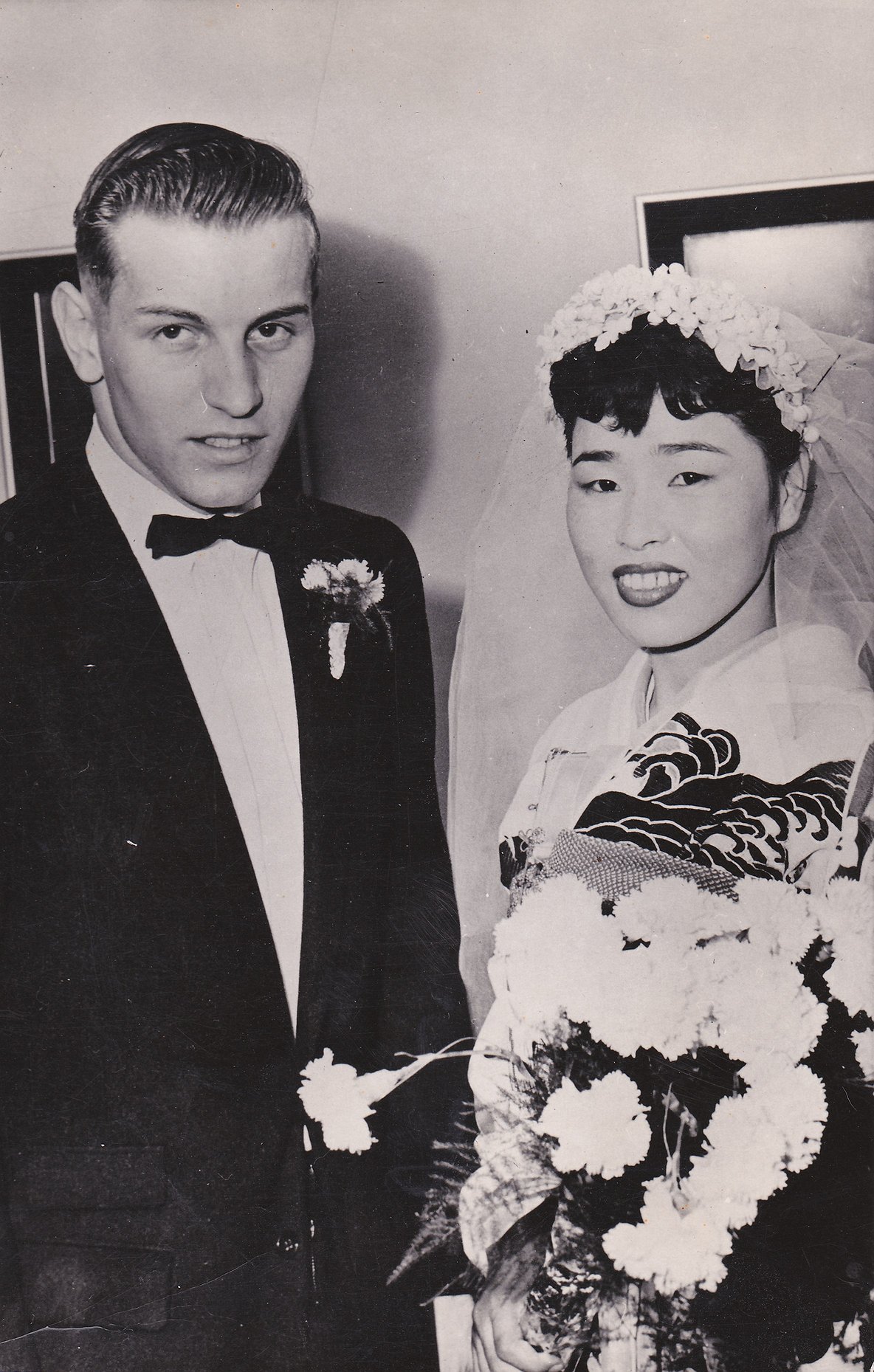 Dale Burk brought his bride, Wakako, to Trego after being stationed by the U.S. Navy in Tokyo. Wakako, known as Katie, worked at the Elks Lodge in Kalispell for 35 years. (Photos courtesy of Kathleen Burk)
Dale Burk brought his bride, Wakako, to Trego after being stationed by the U.S. Navy in Tokyo. Wakako, known as Katie, worked at the Elks Lodge in Kalispell for 35 years. (Photos courtesy of Kathleen Burk)
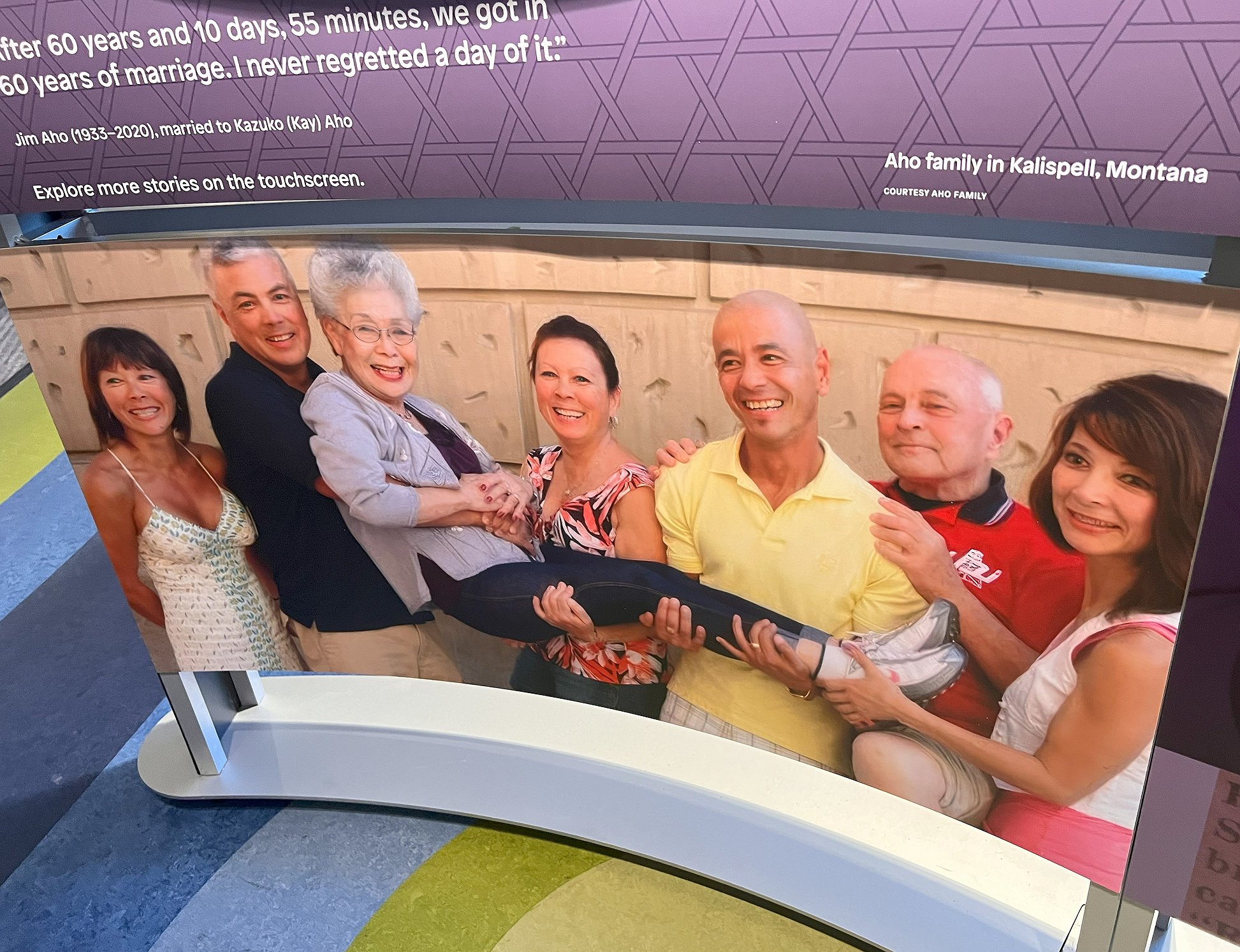 Japanese War Brides, a traveling Smithsonian exhibition, explores the lives of the Japanese women who immigrated to America as wives of U.S. military servicemembers after World War II. The exhibit includes the Japanese war brides who made their lives in Kalispell including the stories of the Aho family. (Photo courtesy Kat Burk)
Japanese War Brides, a traveling Smithsonian exhibition, explores the lives of the Japanese women who immigrated to America as wives of U.S. military servicemembers after World War II. The exhibit includes the Japanese war brides who made their lives in Kalispell including the stories of the Aho family. (Photo courtesy Kat Burk)
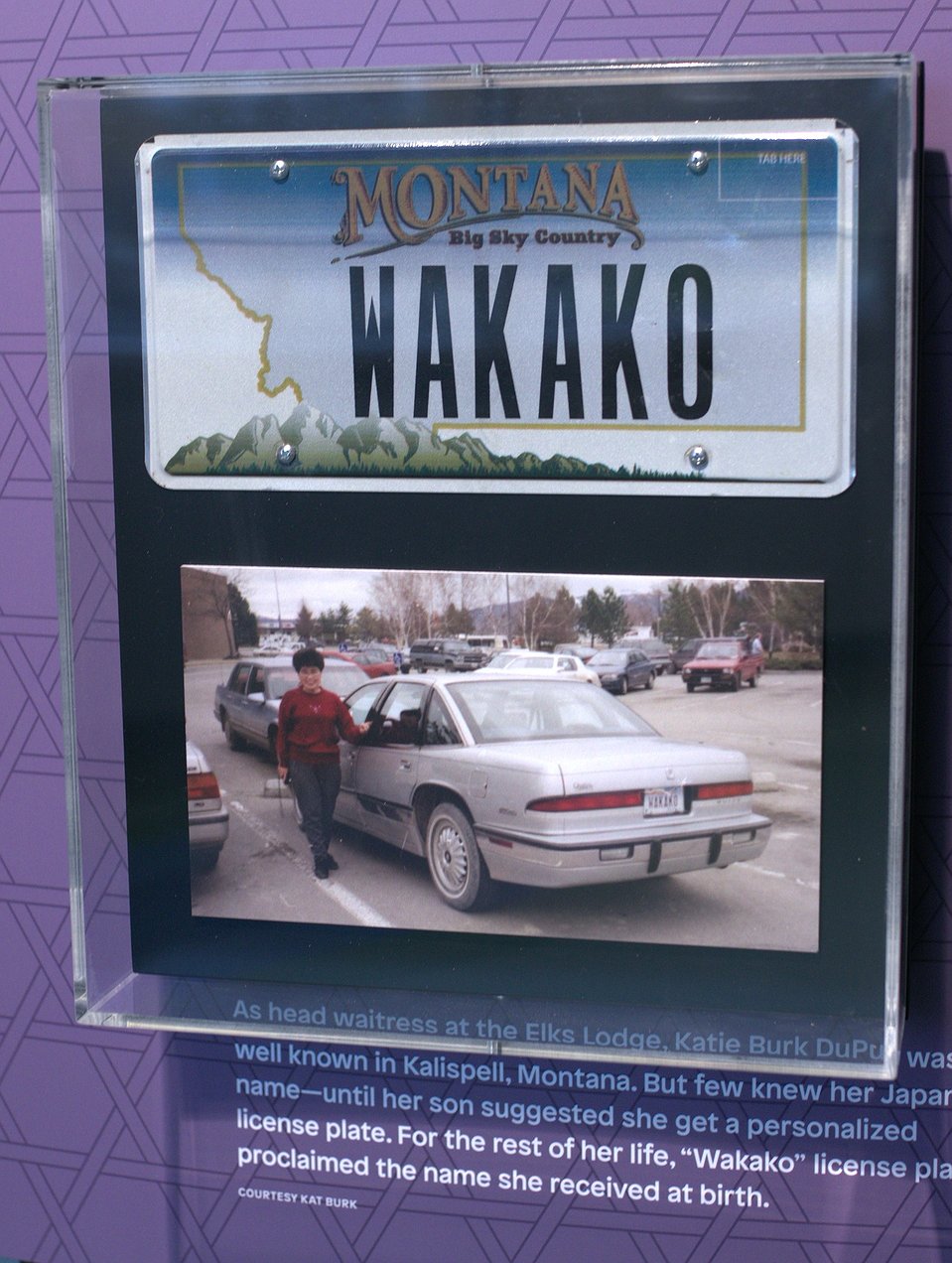 The stories of Japanese war brides who made their lives in Kalispell are part of a traveling Smithsonian exhibition. Part of the exhibit is Katie Burk's personalized license plate with her Japanese name. (Photo courtesy Kat Burk)
The stories of Japanese war brides who made their lives in Kalispell are part of a traveling Smithsonian exhibition. Part of the exhibit is Katie Burk's personalized license plate with her Japanese name. (Photo courtesy Kat Burk)
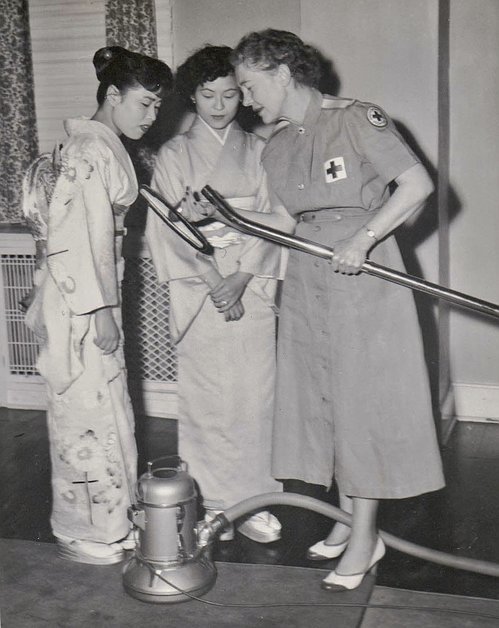 The American Red Cross created “Bride Schools” to teach Japanese women how to be an “American” wife and mother. (Photo courtesy of Kathleen Burk)
The American Red Cross created “Bride Schools” to teach Japanese women how to be an “American” wife and mother. (Photo courtesy of Kathleen Burk)
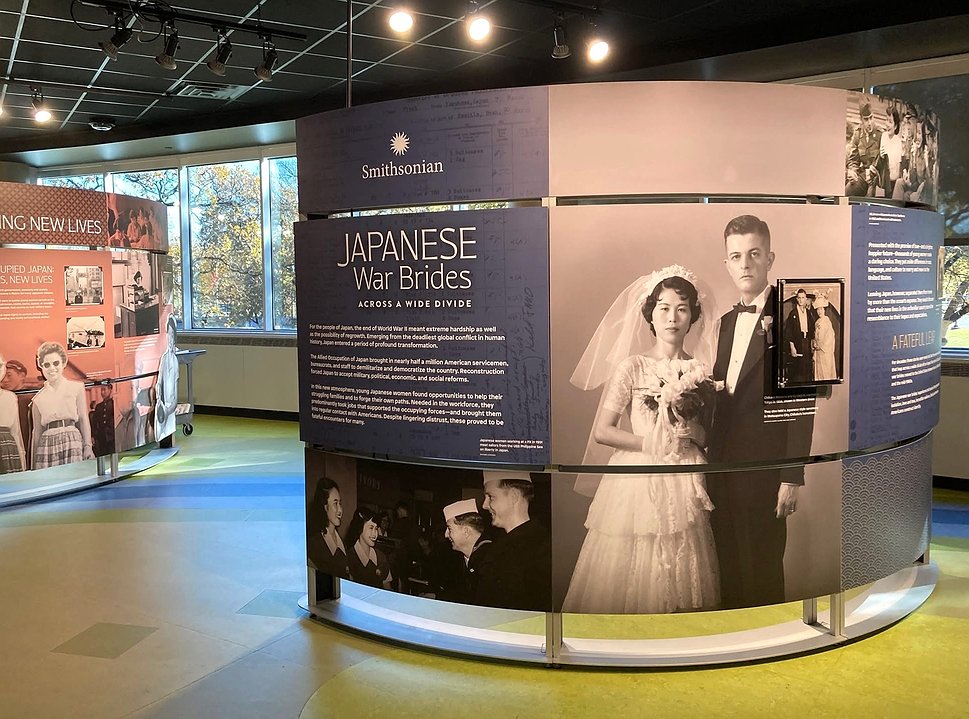 Japanese War Brides, a traveling Smithsonian exhibition, explores the lives of the nearly 45,000 Japanese women who immigrated to America as wives of U.S. military servicemembers after World War II. The exhibit will show at museums across the United States through mid-2028. (Photo courtesy Kat Burk)
Japanese War Brides, a traveling Smithsonian exhibition, explores the lives of the nearly 45,000 Japanese women who immigrated to America as wives of U.S. military servicemembers after World War II. The exhibit will show at museums across the United States through mid-2028. (Photo courtesy Kat Burk)
News Source : https://dailyinterlake.com/news/2025/apr/20/japanese-war-brides-kalispell-featured-in-traveling-smithsonian-exhibit/
Other Related News
07/04/2025
City Manager Doug Russell is departing Kalispell after 13 years overseeing the municipali...
07/04/2025
The Flathead County Planning and Zoning Department will hold a public hearing at 6 pm Jul...
07/04/2025
The Columbia Falls School District board refined its vision for a remodel of the high sch...
07/04/2025
When Flathead County Justice of Peace Eric Hummel decides whether an individual charged w...
07/04/2025




